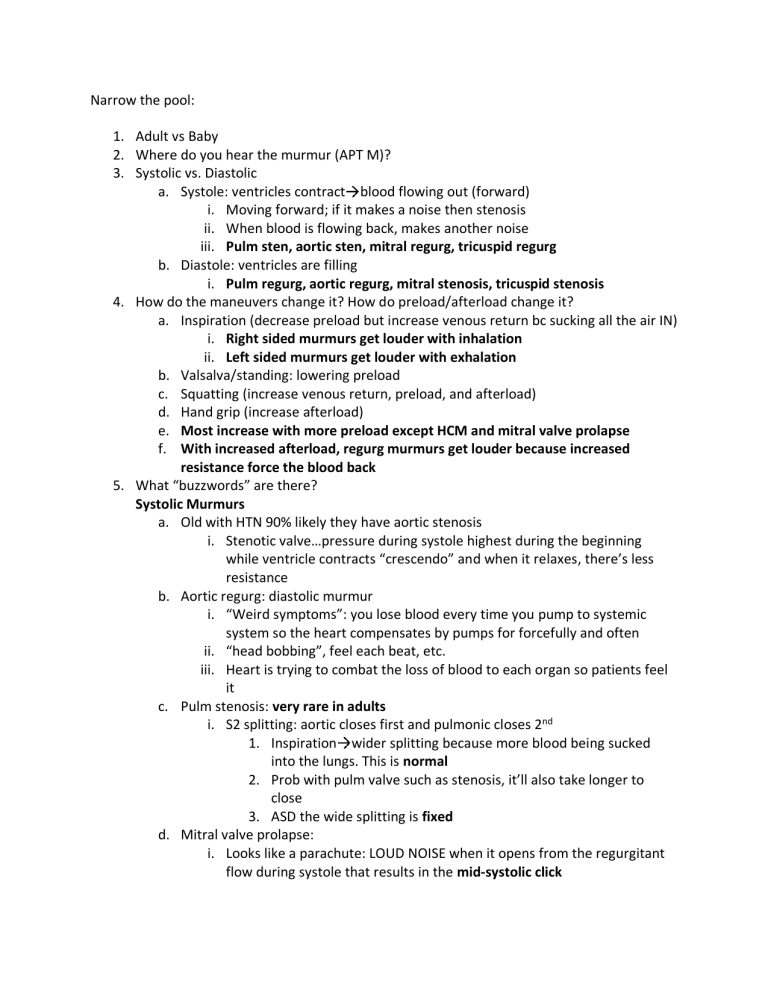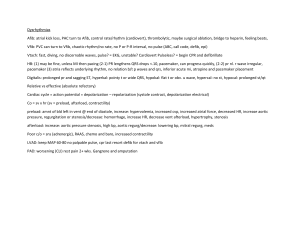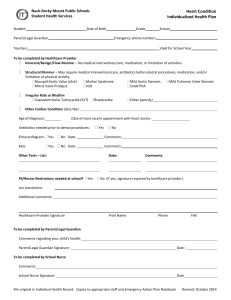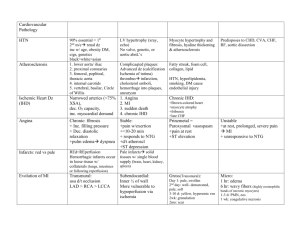
Narrow the pool: 1. Adult vs Baby 2. Where do you hear the murmur (APT M)? 3. Systolic vs. Diastolic a. Systole: ventricles contract blood flowing out (forward) i. Moving forward; if it makes a noise then stenosis ii. When blood is flowing back, makes another noise iii. Pulm sten, aortic sten, mitral regurg, tricuspid regurg b. Diastole: ventricles are filling i. Pulm regurg, aortic regurg, mitral stenosis, tricuspid stenosis 4. How do the maneuvers change it? How do preload/afterload change it? a. Inspiration (decrease preload but increase venous return bc sucking all the air IN) i. Right sided murmurs get louder with inhalation ii. Left sided murmurs get louder with exhalation b. Valsalva/standing: lowering preload c. Squatting (increase venous return, preload, and afterload) d. Hand grip (increase afterload) e. Most increase with more preload except HCM and mitral valve prolapse f. With increased afterload, regurg murmurs get louder because increased resistance force the blood back 5. What “buzzwords” are there? Systolic Murmurs a. Old with HTN 90% likely they have aortic stenosis i. Stenotic valve…pressure during systole highest during the beginning while ventricle contracts “crescendo” and when it relaxes, there’s less resistance b. Aortic regurg: diastolic murmur i. “Weird symptoms”: you lose blood every time you pump to systemic system so the heart compensates by pumps for forcefully and often ii. “head bobbing”, feel each beat, etc. iii. Heart is trying to combat the loss of blood to each organ so patients feel it c. Pulm stenosis: very rare in adults i. S2 splitting: aortic closes first and pulmonic closes 2nd 1. Inspiration wider splitting because more blood being sucked into the lungs. This is normal 2. Prob with pulm valve such as stenosis, it’ll also take longer to close 3. ASD the wide splitting is fixed d. Mitral valve prolapse: i. Looks like a parachute: LOUD NOISE when it opens from the regurgitant flow during systole that results in the mid-systolic click ii. The blood wants to go where the pressure is lower and that’s where the floppy valve comes in. The blood will go this way instead. iii. Increasing preload actually makes it quieter because it allows the leaflets to seal better iv. On questions: 30-40 y/o woman, healthy otherwise, collagen defect etc. e. Tricuspid regurg: so rare, systolic murmur, think about IVDU Diastolic Murmurs: a. Pulm Regurg: not really tested b. Mitral stenosis: a. 30-50 y/o with hx of strep/rheumatic fever b. Opening snap because it’s not used to high pressure and it becomes more muscular and this morphologic change makes it loud Hypertrophic Obstructive Cardiomyopathy: Genetic defect in the sarcomeric protein Asymmetric hypertrophy of septum so LV chamber is very small Murmur created bc blood has to flow thru narrow portion and avoid the mitral Family hx Lightheaded, dizziness, syncope, athlete coming in for physical Always heard at lower region of sternum Increased preload makes it quieter because the cavity is bigger and the tract is wider Also quieter with increased afterload Patient goes from squatting/laying down to standing makes the murmur louder ***in general, no pulm issues with adults and tricuspid pretty much only with IVDU*** Coarctation of aorta: Kids and adults: distal to the arch vessels (UE get blood with no problem, but harder in LE so there will be a difference (pulse, warmth, pressure, etc) - In adults, you don’t have PDA so you have rib notching from the collaterals - Turner Syndrome: also most likely going have bicuspid aortic valve KIDS: is the baby blue or not? Blue: - Truncus arteriosus: no separation between aorta and pulmonary artery - Transposition: need a shunt to keep the babies alive (PDA, ASD); associated with maternal diabetes - Tricuspid atresia: no tricuspid valve so the RV also won’t form properly so there tends to be an ASD and VSD to get SOME blood to the pulm circuit - Tetralogy of Fallot: o RV hypertrophy o Pulm stenosis o Overriding aorta o VSD o Squat to increase afterload and reverse the direction of shunt o Random older kid that was adopted from another country may still have it if they learned how to compensate o Will see boot-shaped heart on CXR o Baby from USA: feeding makes murmur go away then it’s TOF (but unclear why) Acyanotic: - ASD: know the fixed wide S2 splitting, Down syndrome, normally septum secundum o In Down Syndrome, more likely to have more severe ASD so the primum may be implicated because it’s closer to the valve - Patent foramen ovale: o 25% of patients o Problem with the secundum o 30 y/o woman on oral contraceptives, pain in calf, and later dies paradoxical emboli - VSD: most common congenital defect o Small defects are loud: whistles o Large: require sx o Murmur: harsh, holosystolic at lower sternal border EKGs: System: WPW: give then procainamide and call it a day (any of the Class 1A) - - - Are there P waves? o Yes, upright and regular: normal o No, AF or flutter QRS complex: o Narrow: In all leads = normal within 2 little boxes o Wide: This means the issue is NOT due to the atria; ventricular problem Look at V1: • Down= LBBB • Up= RBBB • Can confirm by looking at V6, it should be the opposite Bizarre: V tach PR Interval: o Normal: less than one big box o Longer: AV block 3rd degree: label the P waves and label all the QRS complexes. The intervals between them will be regular . On the other hand, 2nd degree block, the intervals will be grouped. - - ST depression: the heart is “sick”, but not completely messed up either NSTEMI or earliest sign of STEMI o “Scooped ST segment”: digoxin use (not necessarily toxicity) T wave: o Peaked: She literally pointed in the air like a cheerleader like she’s full of energy/hyper so “hyperkalemia” o Hypokalemia you have U wave and T wave going down Axis deviation: Leads I and avF: - both up like 2 thumbs up that’s normal - If they point towards each other (I would be down and aVF would be up), then they are right for each other (right axis deviation) - If they point away, then they are “leaving” each other (left axis deviation)







